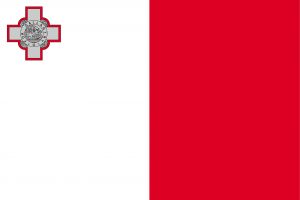Language/Maltese/Grammar/Plurals
Hi Maltese learners! 😊
In this lesson, we will delve into the Maltese plural forms. Knowing how to form plurals is essential for communicating effectively in Maltese. By the end of this lesson, you will have the necessary knowledge to form plurals correctly and understand plurals in context.
With the completion of this lesson, consider investigating these related pages: Adjectives, Prepositions, Possessive Case in Maltese & Indefinite Articles in Maltese.
Introduction[edit | edit source]
In Maltese, plurals are formed in several ways. Therefore, it's essential to understand the rules related to plural formation. As an intermediate Maltese learner, we assume that you have a basic understanding of Maltese grammar. If not, you can refer to our wiki page on Grammar for a quick overview.
Regular Plurals[edit | edit source]
The easiest way to form plurals is by adding "-iet" at the end of the noun. For instance, singular words such as "ktieb" meaning "book" will become "ktiebiet" which means "books" in plural. Here's another example below:
| Maltese | Pronunciation | English |
|---|---|---|
| Bajd | Ba-yid | Egg |
| Bajdiet | Ba-yid-yet | Eggs |
Notice how we added "-iet" at the end of "bajd" to make it "bajdiet."
For plurals ending in "-na," we replace it with "-nejn." For example:
| Maltese | Pronunciation | English |
|---|---|---|
| qronfli | Kronf-lee | Brackets |
| qranflijen | Kronf-lee-yen | Brackets (Plural) |
Case Endings[edit | edit source]
Unlike the singular, where case endings are added to the end of the word, it is added at the end of the last vowel in a noun for plurals. Here's an example of a singular noun, "ktieb" which means "book," and its corresponding plural noun with different case endings:
| Maltese | Pronunciation | English |
|---|---|---|
| Ktieb | Ktieb | Book (Singular) |
| Kotba | Kot-ba | Books (Plural) |
As you can see from above, in the plural, "ktieb" becomes "kotba," with "a" being the case ending. Here is another example:
| Maltese | Pronunciation | English |
|---|---|---|
| taxxa | tax-ia | Dish |
| tixgha | tucked-ja | Dishes |
Notice how the case ending "-a" is added to the last vowel in "tixgha."
Irregular Plurals[edit | edit source]
When forming plural nouns, irregular nouns do not follow the regular "-iet" pattern. Here are some examples:
| Maltese | Pronunciation | English |
|---|---|---|
| tfajla | tie-fai-la | Girl |
| tfajliet | tie-fai-let | Girls |
| ktieb | ktieb | Book |
| kotba | kot-ba | Books |
| tifel | ti-fel | Boy |
| tfal | tif-fl | Boys |
| mulej | mu-lai | Gentleman |
| mulieħ | mul-ieehh | Gentlemen |
In the above examples, we see that the plurals are formed irregularly. To properly use irregular plurals, special attention must be paid to memorizing the specific nouns and their corresponding plurals.
Conclusion[edit | edit source]
By now, you should have a better understanding of Maltese plural formation. Practice and repetition are key to learning plurals. If you want to improve your understanding of Maltese plurals, use Polyglot Club to find native speakers and ask them any questions you may have.
➡ If you have any questions, please ask them in the comments section below.
➡ Feel free to edit this wiki page if you think it can be improved. 😎
Dialogue[edit | edit source]
- Person 1: Qed nitolbu kliem għaliex qed niċċelebraw l-istadjiu tal-ktieb "The Witcher" (<translation in English>: We are choosing words because we are celebrating the stages of the book "The Witcher")
- Person 2: Hemm bżonn nkunu ċari fuq kemm kotba neħtieġu. (<translation in English>: We need to be clear about how many books we need.)
Sources[edit | edit source]
- Modelling Maltese noun plural classes without morphemes
- Knowledge of Maltese singular–plural mappings: Analogy explains ...
- Maltese Plural
Here is the code for SEO tags:
With this lesson finished, you may want to explore these additional pages: Past Tense, Say Hello and Greetings in Maltese, Future Tense & How to Use Have.
Other Lessons[edit | edit source]
- Imperative Mood
- Possessive Case in Maltese
- Questions
- How to Use Be
- Conditional Mood
- Present Tense
- Past Tense
- Prepositions
- Give your Opinion
- Future Tense

